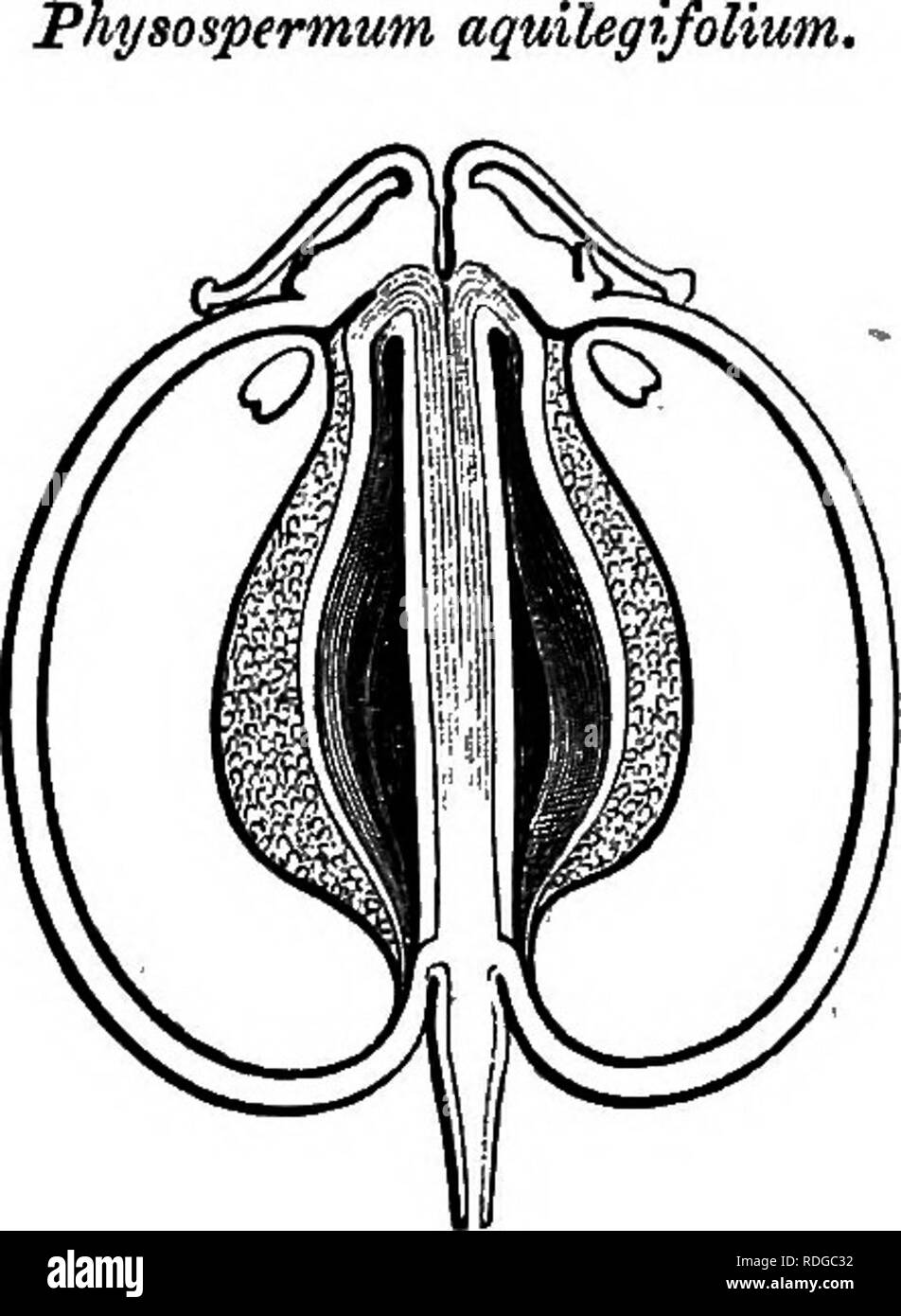. The natural history of plants. Botany. TJMBELLIFERM. 131. Kg. 140. Long. sect, of fruit (I). and solitary vittse in the interposed furrows. They are glabrous perennial herbs, European and oriental, with decompound ternati- pinnate leaves and compound umbels, furnished with involucres and involucels formed of numerous bracts. The seeds are concave on the face, in which the raphe is sunk. Molopospermum (fig. 141) has nearly all the characters of Physospermum, especially in the organs of vegetation; but in the fruit, more elongate, constricted also at the com- missure, the primary ridges are ve

Image details
Contributor:
The Book Worm / Alamy Stock PhotoImage ID:
RDGC32File size:
7.1 MB (260 KB Compressed download)Releases:
Model - no | Property - noDo I need a release?Dimensions:
1353 x 1847 px | 22.9 x 31.3 cm | 9 x 12.3 inches | 150dpiMore information:
This image is a public domain image, which means either that copyright has expired in the image or the copyright holder has waived their copyright. Alamy charges you a fee for access to the high resolution copy of the image.
This image could have imperfections as it’s either historical or reportage.
. The natural history of plants. Botany. TJMBELLIFERM. 131. Kg. 140. Long. sect, of fruit (I). and solitary vittse in the interposed furrows. They are glabrous perennial herbs, European and oriental, with decompound ternati- pinnate leaves and compound umbels, furnished with involucres and involucels formed of numerous bracts. The seeds are concave on the face, in which the raphe is sunk. Molopospermum (fig. 141) has nearly all the characters of Physospermum, especially in the organs of vegetation; but in the fruit, more elongate, constricted also at the com- missure, the primary ridges are very unequally developed. The two mar- ginal are reduced to very small dimen- sions, whilst the dorsal and the two latero-dorsal alone project in the form of prisms with a blunt independent angle; which gives the transverse section of each mericarp a trapi- zoidal form. The vittse are solitary and well developed, and the seed there has deep canals. The , -nr ^ 1 /Ti/r Molopospermum cicutarium. only Molopospermum known (M. cicutarium) inhabits Central and Southern Europe. Smyrnium holds an intermediate position between Molopospermum and Physospermum by the promi- nence of its primary ridges. The two marginal are often little developed at the commissure, which is more or less hollowed. The fruit (fig. 142-144) is gene- rally short, or even wider than long, with numerous vittse. The face of the seeds is concave and the margin generally invo- lute. They are biennial plants of Europe, the Levant and Northern Africa, glabrous, having compound umbels with involucres and involucels nil or reduced to a few bracts. We can distinguish K 2. Please note that these images are extracted from scanned page images that may have been digitally enhanced for readability - coloration and appearance of these illustrations may not perfectly resemble the original work.. Baillon, Henri Ernest, 1827-1895; Hartog, Marcus Manuel, 1851-. London, L. Reeve & Co.